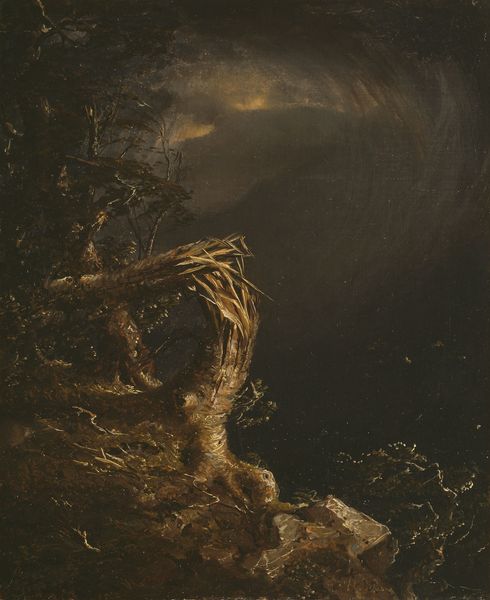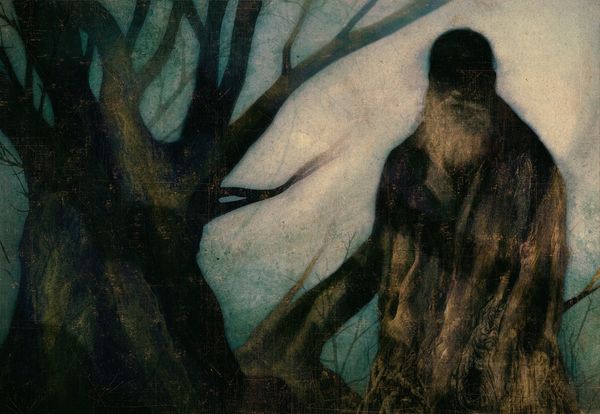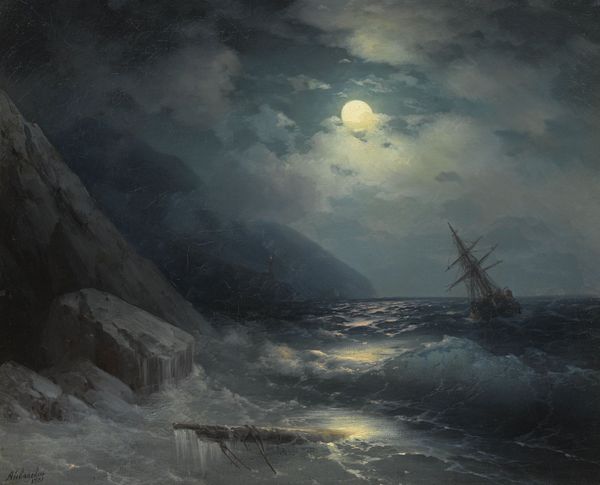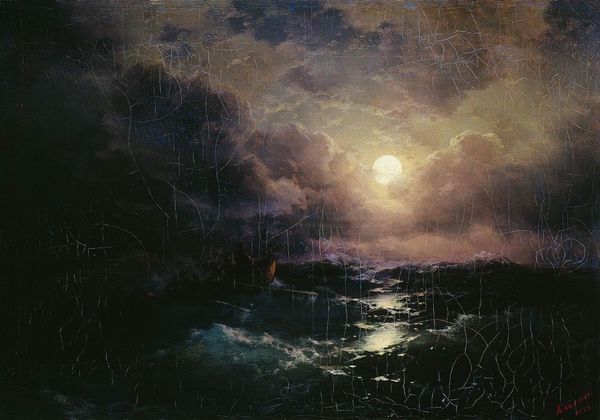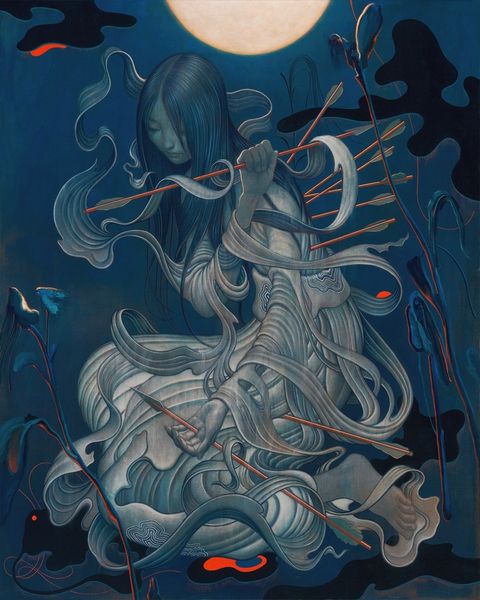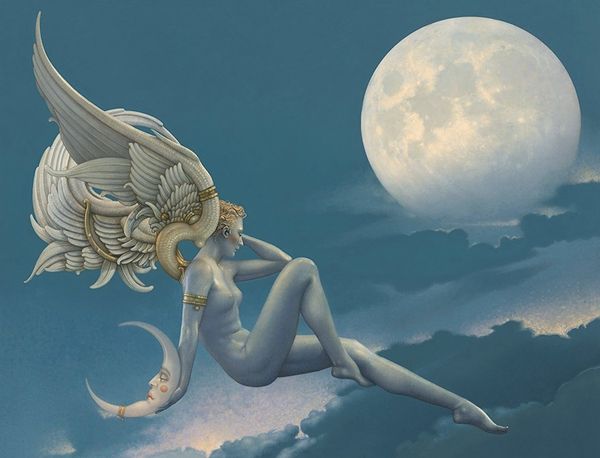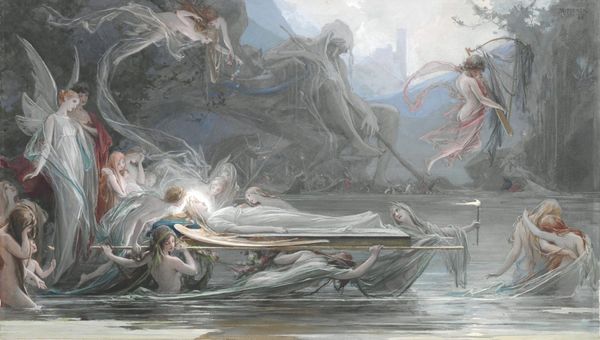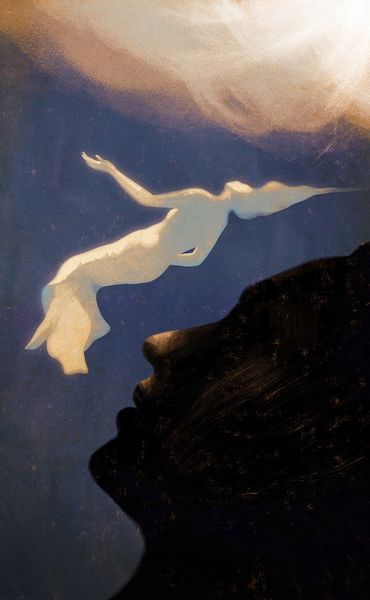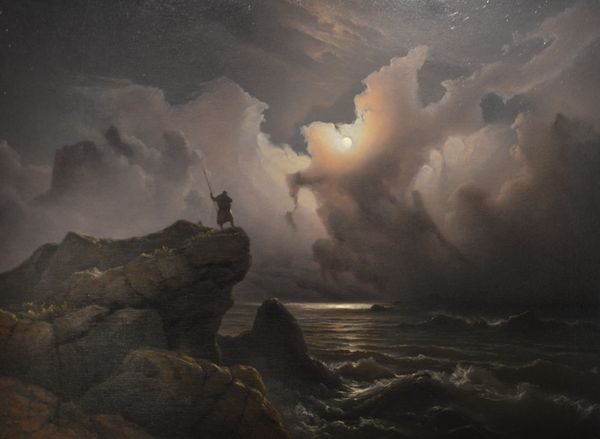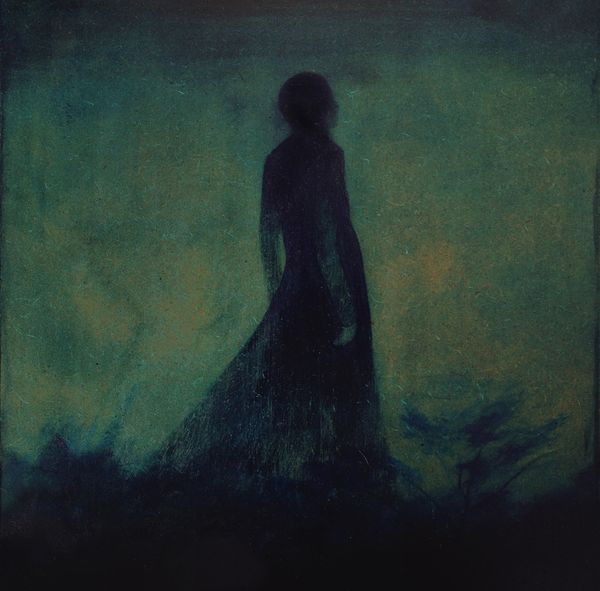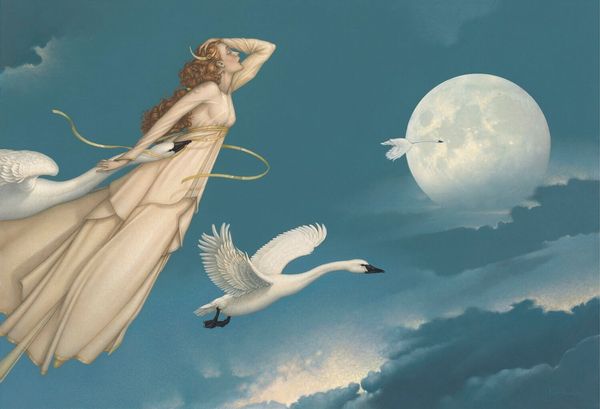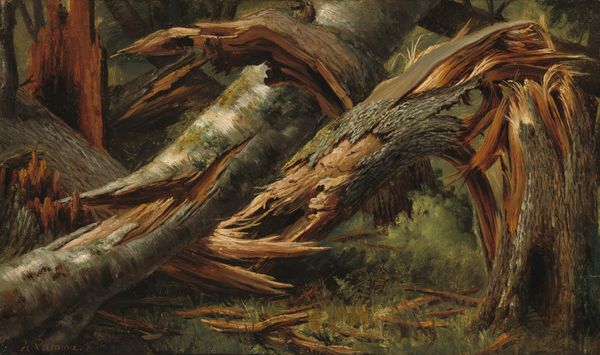
painting, oil-paint
#
tree
#
allegories
#
sky
#
allegory
#
narrative-art
#
fantasy art
#
generative art
#
symbol
#
painting
#
oil-paint
#
landscape
#
forest
#
romanticism
#
cloud
#
water
#
history-painting
#
sublime
Copyright: Public domain
Editor: Wow, the mood is overwhelming; it's darkness shot through with furious light, almost like a memory of something colossal breaking. Curator: Precisely! We’re looking at Maxim Vorobiev’s "Oak Fractured by Lightning. Allegory on the artist's wife death," created in 1842. Oil on canvas. Editor: "Allegory" hits the nail right on the head, doesn't it? It's nature mirroring human emotion, romanticism at its peak. How might Vorobiev's personal loss influence his rendering of, say, the tree's vulnerability here? The fractured branches, the almost desperate reaching. Is that mourning made visible? Curator: Definitely. Think about it: an oak tree, a symbol of strength and longevity, instantly undone. There's a real sense of personal grief in that quick shift from monumental to tragically ruined. A symbol becomes its inverse, reflecting a permanent change. Editor: I read this work in conversation with other depictions of widowhood from the era; for women especially, premature loss of one's partner, such as the passing of an artist's muse, brings societal vulnerability and the threat of economic precariousness. But where's the figure in this composition, Vorobiev’s rendering of this complex societal fate, beyond that allegory? Curator: It’s there, suggested rather than stated, isn't it? The way the lightning strikes—almost lovingly—yet destroys. The sky above is an oppressive dark, pushing down and filling the scene with a sense of divine abandonment, as much about society as his soul. And isn’t this painting of a subjective landscape infinitely more intimate, more vulnerable, than a standard portrait might ever have been? Editor: I think you're right. By using this sublime visual language, the intensity of nature reflecting internal turmoil, Vorobiev circumvents limitations of acceptable expressions of gendered experience. He paints the enormity of grief, unconstrained. Curator: Leaving us with something raw and resonating, long after the storm has passed. Editor: Indeed, something enduring—an understanding of grief and how artists try to create safety and meaning amid trauma.
Comments
No comments
Be the first to comment and join the conversation on the ultimate creative platform.
